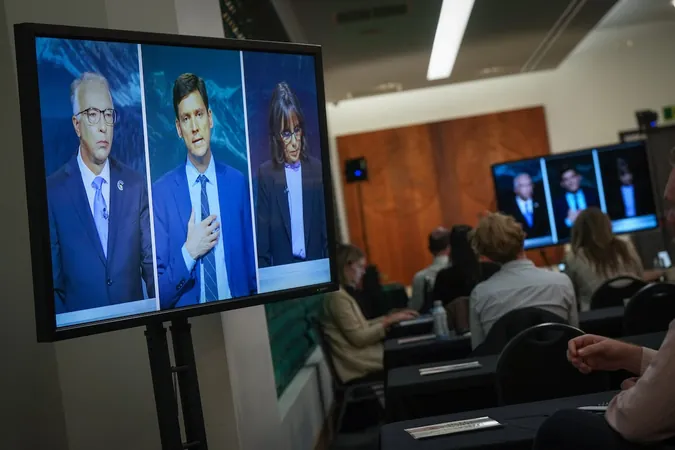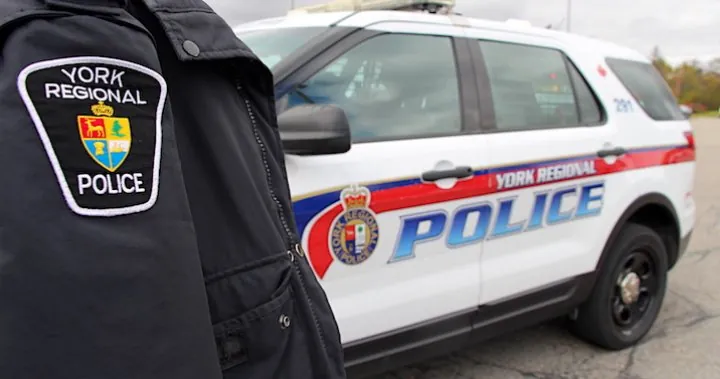
Key Highlights from the B.C. Leaders Election Debate: A Clash of Ideologies Ahead of the Vote
2024-10-09
Author: William
Key Highlights from the B.C. Leaders Election Debate: A Clash of Ideologies Ahead of the Vote
As the October 19 election approaches, leaders from British Columbia's major political parties took to the stage for a heated televised debate that underscored the province's critical challenges and the stark contrasts in their proposed solutions. The debate saw New Democrat Party Leader David Eby, Conservative Leader John Rustad, and Green Party Leader Sonia Fursteneau engage in a spirited exchange filled with accusations, policy promises, and moments of political theater.
1) Housing Affordability: A Divisive Topic
Housing emerged as the most contentious issue, with leaders trading barbs over their strategies. Rustad slammed Eby’s policies, arguing that the NDP government obstructs private sector involvement, thus slowing down the construction of new homes. He claimed the province needs up to 50,000 new housing starts, albeit without a concrete target from his party.
In response, Eby criticized Rustad's history under the former Liberal government, asserting that he has continually championed aggressive housing policies that aim to deliver 300,000 middle-income homes. Meanwhile, Fursteneau condemned both parties, accusing them of failing to address real affordability issues and suggesting their proposals primarily serve real estate investors rather than ordinary citizens.
2) Addressing the Needs of Seniors
The debate took an unexpected turn when moderator Shachi Kurl focused on aging demographics, highlighting the lack of concrete plans for seniors. Rustad promised enhancements to senior care services, including the creation of 5,000 long-term care beds, but Eby dismissed this as inadequate, pointing to Rustad's history in government and criticizing the care standards available in long-term facilities.
Eby also leveraged Rustad’s previous remarks against COVID-19 vaccinations to question his credibility on health matters. The back-and-forth showcased how demographic changes will play a pivotal role in the elections.
3) The State of Healthcare: Proposals Clash
Healthcare was another critical theme, with Rustad defending his party's wish to extend the role of private healthcare under a single-payer model, directly contrasting Eby’s record of extended emergency wait times and emergency department closures. Eby rebutted, attributing the healthcare issues to a shortage of healthcare workers, and stated that his government is actively rectifying this through recruitment and training efforts.
Fursteneau suggested that her party would implement integrated community health centers, criticizing the current system as overstuffed with bureaucracy and lacking efficiency.
4) Distinct Debate Styles
The tone and approach of the leaders diverged significantly during the 90-minute debate. Rustad painted a bleak picture of life in British Columbia under the NDP, sharing stories meant to evoke concern over public safety and emotional distress faced by residents.
Eby oscillated between assertiveness and a more reflective demeanor, consistently holding Rustad accountable for his party’s past decisions. Fursteneau maintained an assertive presence, often interjecting to challenge the claims of her opponents and advocating for a forward-thinking Green agenda that includes significant financial commitments.
5) Memorable Exchanges
The debate was peppered with sharp exchanges that kept audiences engaged. Eby challenged Rustad’s lack of a costed platform by referencing an economist’s skepticism about its viability, stirring laughter in the audience. Meanwhile, Fursteneau called out Rustad's views on Indigenous rights, framing them as antiquated.
As Rustad closed the debate, he posed a poignant question to viewers regarding the improvements—if any—they have experienced under the NDP's governance, leaving the audience to ponder the effectiveness of the current administration.
With party platforms still unfolding, this debate signals an intense election race where British Columbians will have to sift through the rhetoric and promises to decide their future direction. Whether progressive or conservative, the stakes have never been higher, and the voters will soon determine which vision they wish to embrace for the Province of British Columbia.









 Brasil (PT)
Brasil (PT)
 Canada (EN)
Canada (EN)
 Chile (ES)
Chile (ES)
 España (ES)
España (ES)
 France (FR)
France (FR)
 Hong Kong (EN)
Hong Kong (EN)
 Italia (IT)
Italia (IT)
 日本 (JA)
日本 (JA)
 Magyarország (HU)
Magyarország (HU)
 Norge (NO)
Norge (NO)
 Polska (PL)
Polska (PL)
 Schweiz (DE)
Schweiz (DE)
 Singapore (EN)
Singapore (EN)
 Sverige (SV)
Sverige (SV)
 Suomi (FI)
Suomi (FI)
 Türkiye (TR)
Türkiye (TR)